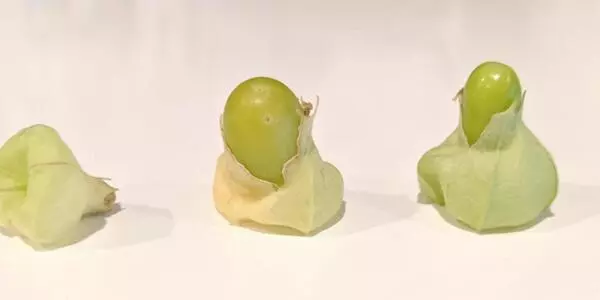The common ground cherry is an erect, branched perennial. Flowers emerge singly from leaf axils, bell-shaped, about 1 inch long, sulphur to lemon yellow, the inner surface with 5 purplish spots or smudges toward the base that are sometimes merged into a ring. May through September. Leaves alternate, long petioled, entire or with lobelike teeth, unsymmetrical, ovate margins. Fruit the “ground cherry,” a berry with a crisp, papery husk that is 5-sided, pointed, and lanternlike.
More adaptable crops are required to address global hunger and worsening food production challenges. Researchers have now created new genetic blueprints for two different types of groundcherries. Their work has the potential to help orphan crops like groundcherry strengthen global food supplies. It may also shed light on how plants evolve and acquire new characteristics.
Over 34 million people in the United States are food insecure. More diverse and adaptable crops are required to address food production challenges exacerbated by climate change. Groundcherries, small, sweet berries, may not feed the country, but they, along with other related “orphan crops,” could help to strengthen food supplies. Unfortunately, these distant cousins of tomatoes are not yet ready for large-scale production.
More than 20 crops are members of the nightshade family. There are major crops — potato, tomato, eggplant and then there are minor crops, or orphan crops, which are either semi-domesticated or simply wild. Many of these have received little research attention, but they may have greater production potential if further developed.
Zachary Lippman
Cold Spring Harbor Laboratory (CSHL) Professor and HHMI Investigator Zachary Lippman is working to change that. Alongside CSHL and HHMI postdoc Jia He, Lippman built genetic blueprints, or models, for two types of groundcherry. These new models can guide plant geneticists toward unlocking groundcherries’ untapped potential. They may also be key in scaling up other nightshade plants for widespread use. Lippman says:
“More than 20 crops are members of the nightshade family. There are major crops — potato, tomato, eggplant and then there are minor crops, or orphan crops, which are either semi-domesticated or simply wild. Many of these have received little research attention, but they may have greater production potential if further developed.”
Because of their similar genetics and long evolutionary history, groundcherries are ideal models for the nightshade family. They’re also common in North America, easy to grow, and easy to genetically modify. Lippman believes that their most intriguing feature is the papery, balloon-like husk, or inflated calyx, that surrounds their berries.

Lippman explains, “It appears to have evolved independently multiple times in flowering plants.” “It’s unclear whether this is an evolutionary quirk, an adaptive trait, or both. But one thing is certain in my mind: it’s one of the most interesting evolutionary novelties to emerge in plants.”
Previous nightshade research suggested that genes called MADS-box were responsible for the inflated calyx’s emergence. Lippman and He turned off the MADS-box genes one by one on their new groundcherry models using the genome editing tool CRISPR. They discovered that whether the plants had the genes or not, they still grew an inflated calyx. The models also enabled them to identify a gene required for inflated calyx development. He states:
“Without these genomic resources, it’s very hard to pinpoint the molecular mechanisms underlying some of the traits that arose through evolution. We think with our new resource, our new genomes, we can dissect this whole process.”
Lippman refers to the new groundcherry models as “poster children” for what’s to come from his lab. Their goal is to populate the nightshade family with a plethora of new plant models, making it easier to improve crops through genome editing. These models will also contribute to a better understanding of plant evolution.
“These new models can provide us with the means to answer the fundamental question of how new traits emerge in plants,” Lippman says. “I believe Jia will be the one to take on that in the future.”
















